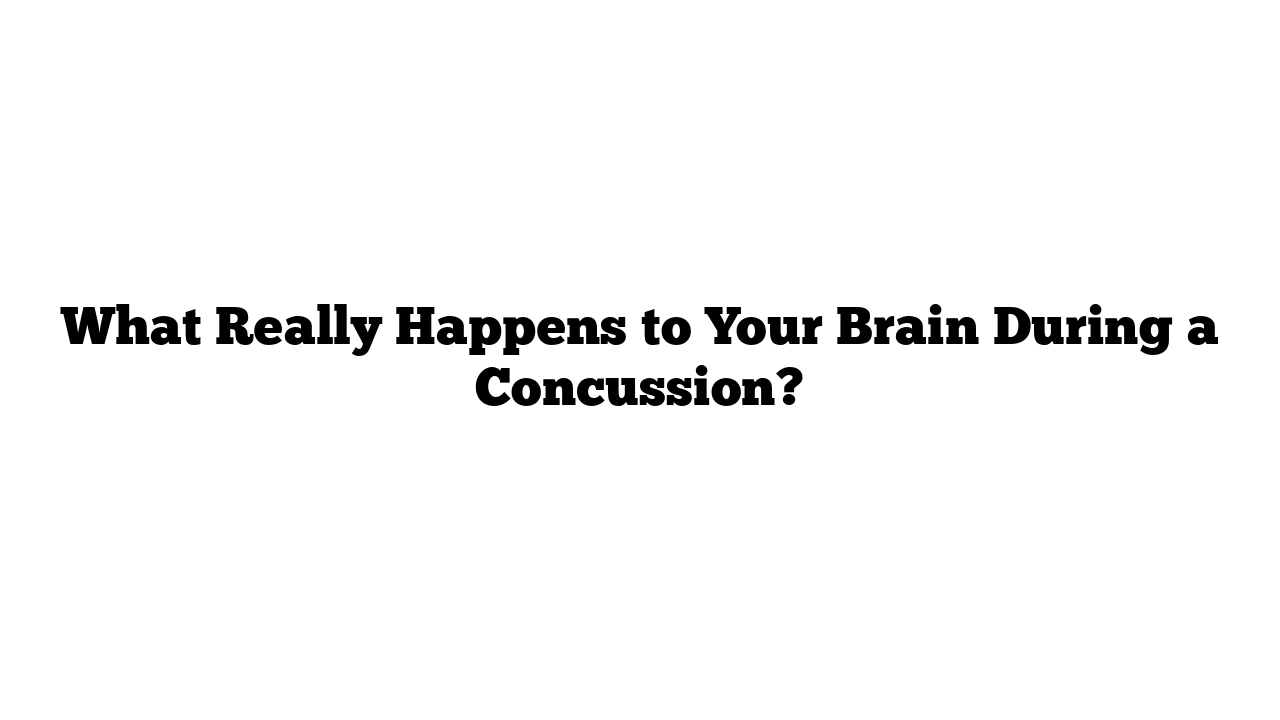Every year in the U.S., 2.5 to 4 million people suffer concussions from sports and recreational activities. But what exactly happens when you get a concussion, and how dangerous are these brain injuries?
What Happens During a Concussion?
The brain is a soft, jelly-like tissue nestled inside the skull, usually shielded from bumps and jolts by membranes and the skull’s hard casing. But a strong impact—like a fall or a hit—can make the brain shift suddenly, striking the inner skull. The brain’s structure, filled with billions of neurons and delicate axons, is quite fragile. When the brain moves violently, neurons stretch and sometimes tear, disrupting communication across the brain.
This damage not only interrupts neuron function, but as broken axons deteriorate, they release toxins that damage neighboring neurons. This cascade of effects—stretching, tearing, and toxin release—results in a concussion.
Common Symptoms of a Concussion
Concussions can manifest in many different ways because every brain is unique. Symptoms often include:
- Blackouts
- Headaches
- Blurry vision
- Balance problems
- Mood changes like anxiety and depression
- Memory and thinking difficulties
- Sleep problems
Fortunately, the majority of concussions heal within days or weeks, provided you get plenty of rest and ease back into activity slowly.
Addressing Common Myths About Concussions
A popular myth is that you shouldn’t sleep after a concussion because it could lead to a coma. In reality, it’s safe to sleep after a concussion as long as doctors don’t suspect a more severe injury, such as a brain bleed. In fact, rest is essential for recovery.
Post-Concussion Syndrome (PCS): When Symptoms Don’t Go Away
Some individuals experience Post-Concussion Syndrome (PCS), where symptoms like headaches, learning difficulties, and mood changes persist for months or even years. Trying to “play through” a concussion or returning to sports too soon significantly raises the risk of PCS.
Subconcussive Hits: The Silent Threat
Not all brain injuries come from diagnosed concussions. Subconcussive impacts are less severe head hits that may go unnoticed but can still damage the brain over time, especially if they occur repeatedly. Sports like soccer, where players often head the ball, are prime examples.
Using Diffusion Tensor Imaging (DTI), scientists have found that athletes who frequently head the ball (around 1,800 times a year) experience damage to the structural integrity of their axon bundles. The damage is comparable to a rope fraying from repeated wear. These players also perform worse on memory tests, showing that even mild, repeated impacts can lead to measurable brain changes.
Chronic Traumatic Encephalopathy (CTE): A Devastating Brain Condition
Repeated subconcussive hits can lead to Chronic Traumatic Encephalopathy (CTE), a serious degenerative brain condition. People with CTE typically experience:
- Mood and behavior changes in their 30s and 40s
- Memory and thinking problems as the disease progresses
- In severe cases, dementia
CTE is thought to be caused by a buildup of tau proteins, which usually stabilize microtubules in axons. Repeated impacts dislodge these proteins, causing them to clump together, disrupting brain communication, and eventually spreading through the brain.
Why Concussions Often Go Unreported
Studies show that between 50% and 80% of sports-related concussions go unreported. This may be due to athletes not recognizing their symptoms, or pressure to keep playing despite the injury. Unreported concussions undermine recovery and pose serious risks.
Protecting Your Brain
Our brains are resilient but not invincible. Protecting your head, recognizing concussion symptoms, and giving yourself time to recover are essential to maintaining brain health. Concussions and repeated head impacts may be common, but understanding their risks can help prevent long-term damage and support safe recovery practices.
For more information on brain health, visit medicaltimes.io.
